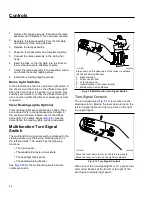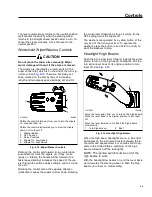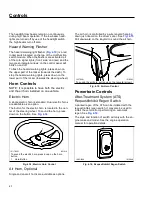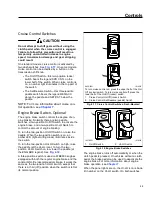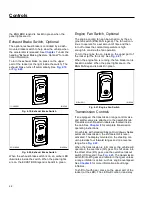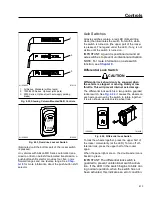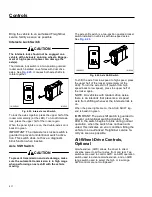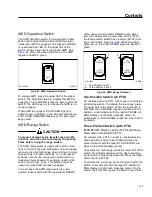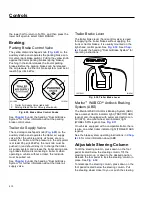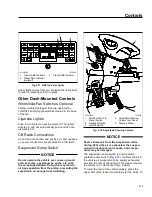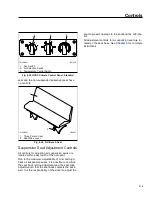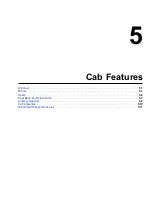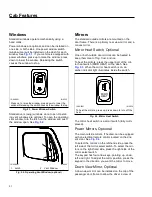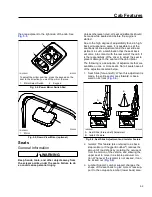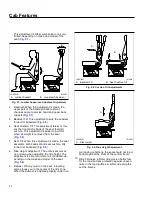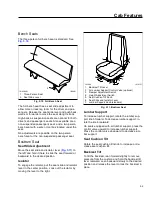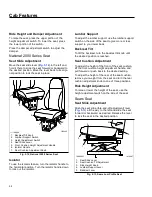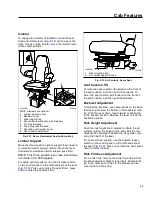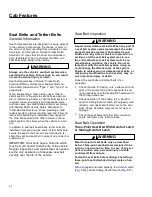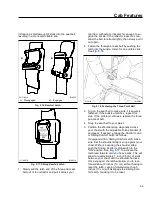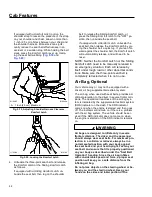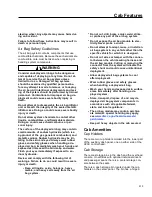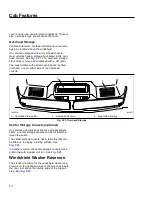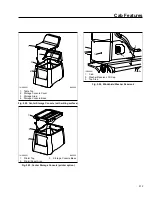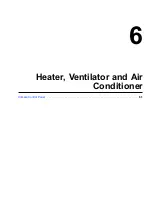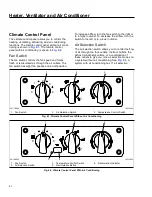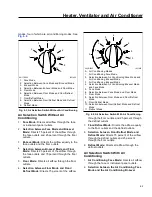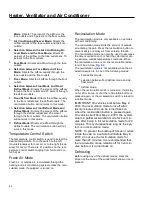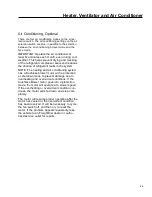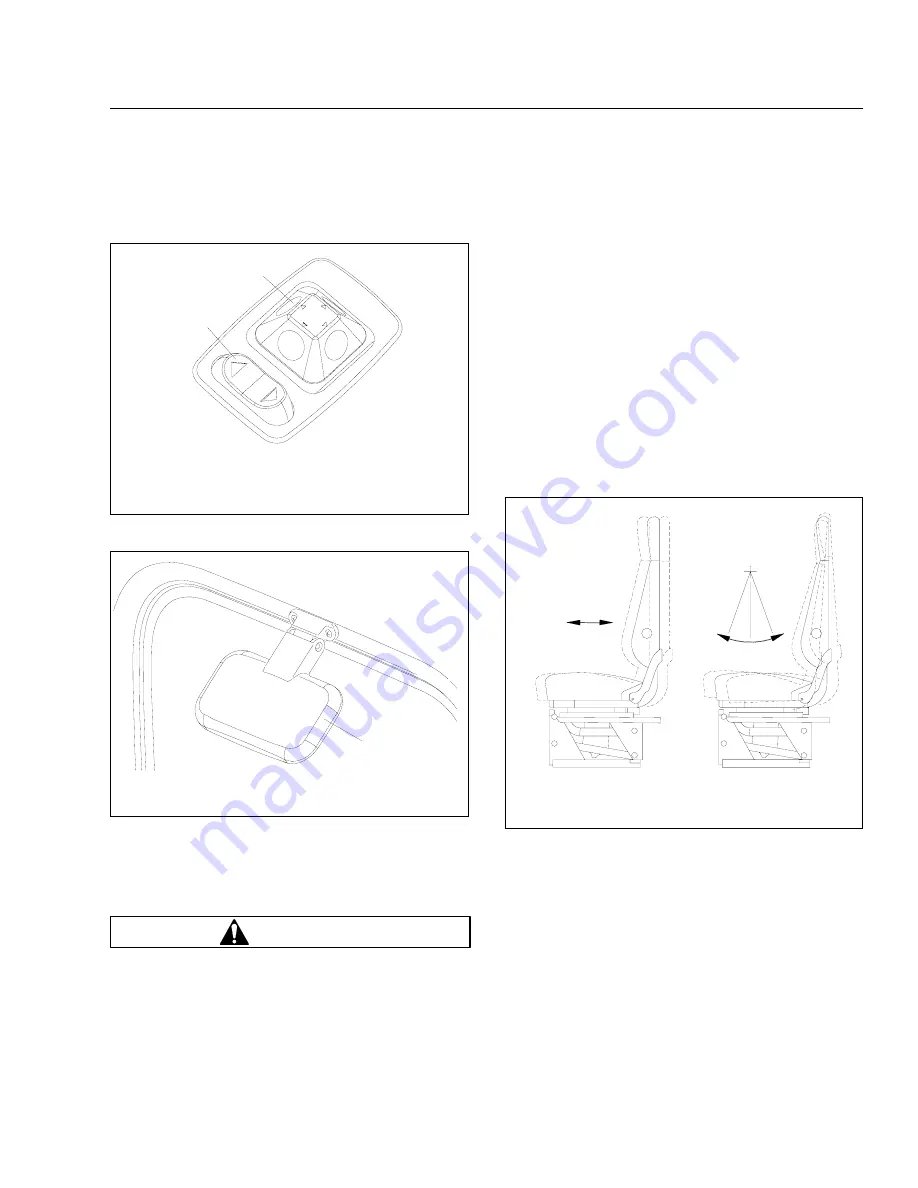
the area adjacent to the right side of the cab. See
Fig. 5.5
.
Seats
General Information
WARNING
Keep hands, tools, and other objects away from
the scissor points under the seats. Failure to do
so could cause personal injury.
Unless otherwise noted, all seat adjustments should
be made while seated and before the engine is
started.
Due to the high degree of adjustability found in high-
back air suspension seats, it is possible to set the
seat back recline adjustment and the seat slide ad-
justment in such a combination that the seat back
will come into contact with the rear wall of the cab. It
is the responsibility of the driver to adjust the seat to
prevent damage to the seat and the cab interior.
The following is a description of adjustments that are
available on one or more seats. Not all seats have all
of the adjustments listed below.
1.
Seat Slide (fore-and-aft): When this adjustment is
made, the entire seat moves forward or back-
ward on its track (
Fig. 5.6
).
2.
Isolator: This feature (also referred to as back-
slap isolator or Chugger-Snubber
®
) reduces the
amount of road shock by isolating the occupant
from the motion of the vehicle, and allowing the
upper seat to move in a simple pendulum mo-
tion. Whenever the isolator is not desired, it can
be locked out (
Fig. 5.6
).
3.
Lumbar Support: Lumbar support changes the
shape of the seat back to give more or less sup-
port to the occupant’s lumbar (lower back) area.
10/05/2001
f610523
1
2
To adjust the mirror position, press the keypad on the
door in the direction you want the mirror to move.
1.
Mirror Select Switch
2.
Keypad
Fig. 5.4, Power Mirror Switch Pad
10/05/2001
f720396
1
1.
Mirror
Fig. 5.5, Down View Mirror (optional)
10/05/2001
f910482
A
B
A. Seat Slide (fore-and-aft) Adjustment
B. Isolator Feature
Fig. 5.6, Seat Slide Adjustment and Isolator Feature
Cab Features
5.2

